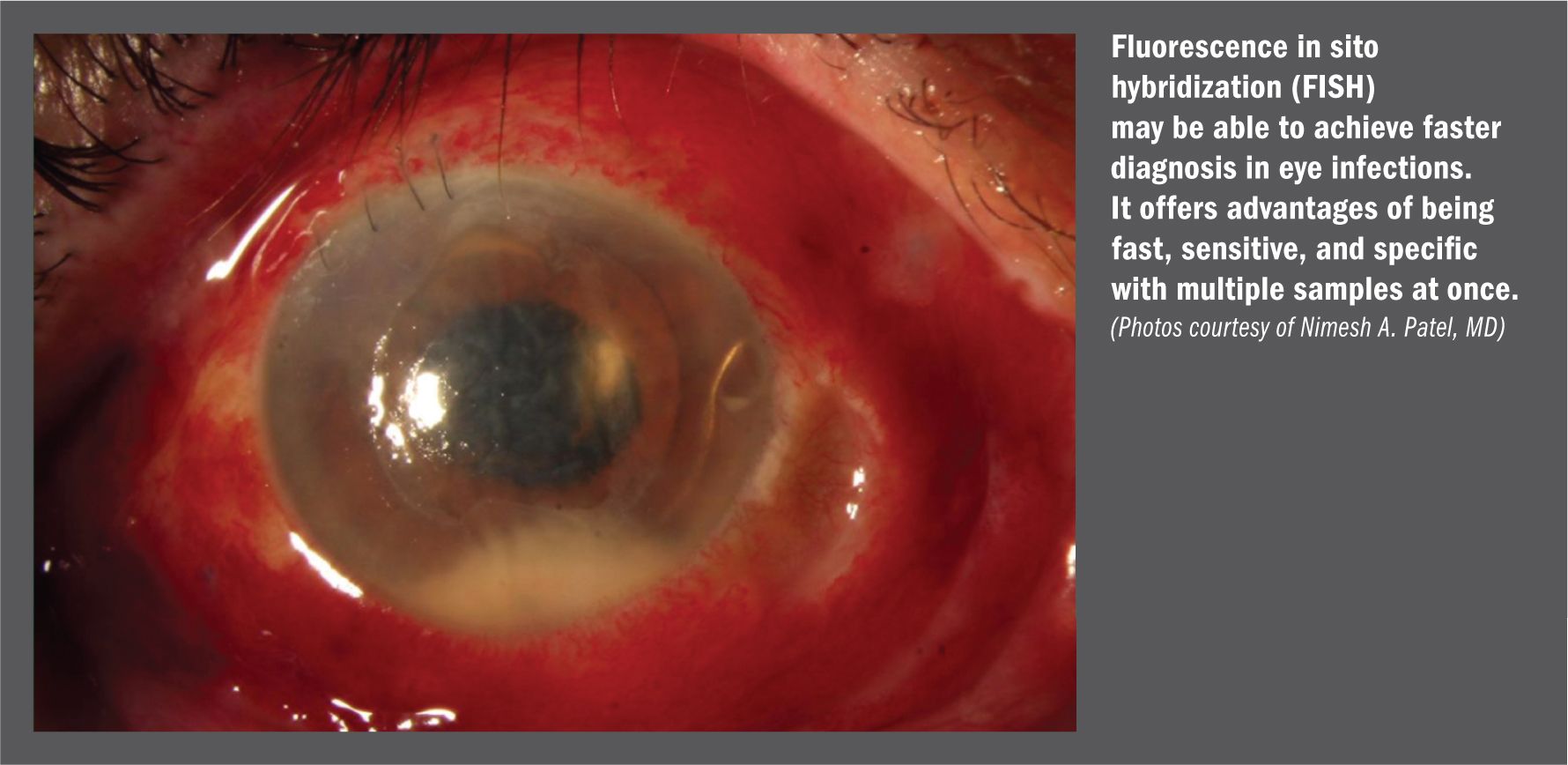FISH in focus for fast eye infection diagnosis
Despite cost, advantages include sensitivity, improved outcomes

Mentors Harry Flynn, MD, and Darlene Miller, MD;
EDITOR’S NOTE: Ophthalmology Times is pleased to recognize Nimesh A. Patel, MD, fellow, Bascom Palmer Eye Institute, University of Miami Miller School of Medicine, as the third-place honoree of the second Ophthalmology Times Research Scholar Honoree Program. Dr. Patel’s abstract is featured here. The Ophthalmology Times Research Scholar Honoree Program is dedicated to the education of retina fellows and residents by providing a unique opportunity for fellows/residents to share notable research and challenging cases with their peers and mentors. The program is supported by unrestricted grants from Regeneron Pharmaceuticals and Carl Zeiss Meditec Inc.
We studied a technology that has been used in sepsis and in hospital-based bacterial detection systems-fluorescence in situ hybridization (FISH). The goal is to achieve faster diagnosis in eye infections. FISH offers advantages of being fast, sensitive, and specific with multiple samples at once. A disadvantage can be the cost. However, FISH is improving patient outcomes in septicemia, resulting in a reduction in ICU mortality, decreased length of hospital stays, and reduced costs.
Methods
The study used vitreous samples from patients with endophthalmitis; cornea samples from patients with infectious keratitis; and a commercial molecular kit for DNA hybridization.
Results
We used a molecular technique, a hybridization, where we dropped DNA probes onto the samples. We heated them up for 20 minutes and then looked at the fluorescents under the microscope. In a comparison in Candida endophthalmitis, we found that FISH was nearly two days faster. It also proved to be effective, with no false positives. We were able to identify staphylococci in 19 of 20 samples.
We identified Staphylococcus aureus in nine of 10 samples, and we detected Coag-negative staphylococci in 10 of 10 samples. In FISH Candida keratitis, we were able to detect Candida albicans from a patient with endophthalmitis and keratitis. The results of FISH Pseudomonas keratitis were effective. We were able to detect Pseudomonas aeruginosa from a patient with keratitis. In a comparison to PCR post incubation, FISH took 20 minutes, compared to four to five hours for PCR. It also was not labor intensive and had a sensitivity >90%, compared to >99% for PCR. Both had a specificity of 100%.
Conclusion
The novel use of FISH for the detection of pathogens from isolates in endophthalmitis and keratitis shows positive results. We found rapid and specific identification of bacteria and fungus one to two days faster than current culture methods with no false negatives, low labor intensity and an unknown cost utility. It could improve antimicrobial stewardship and allow for faster identification and treatment of endophthalmitis. Future studies will expand the project to include other ocular infections, testing from vitreous samples, and cost analysis.
Disclosures:
Nimesh A. Patel, MD
E: nimeshpatel300@gmail.com
Dr. Patel has no relevant financial interests to disclose.
Newsletter
Keep your retina practice on the forefront—subscribe for expert analysis and emerging trends in retinal disease management.